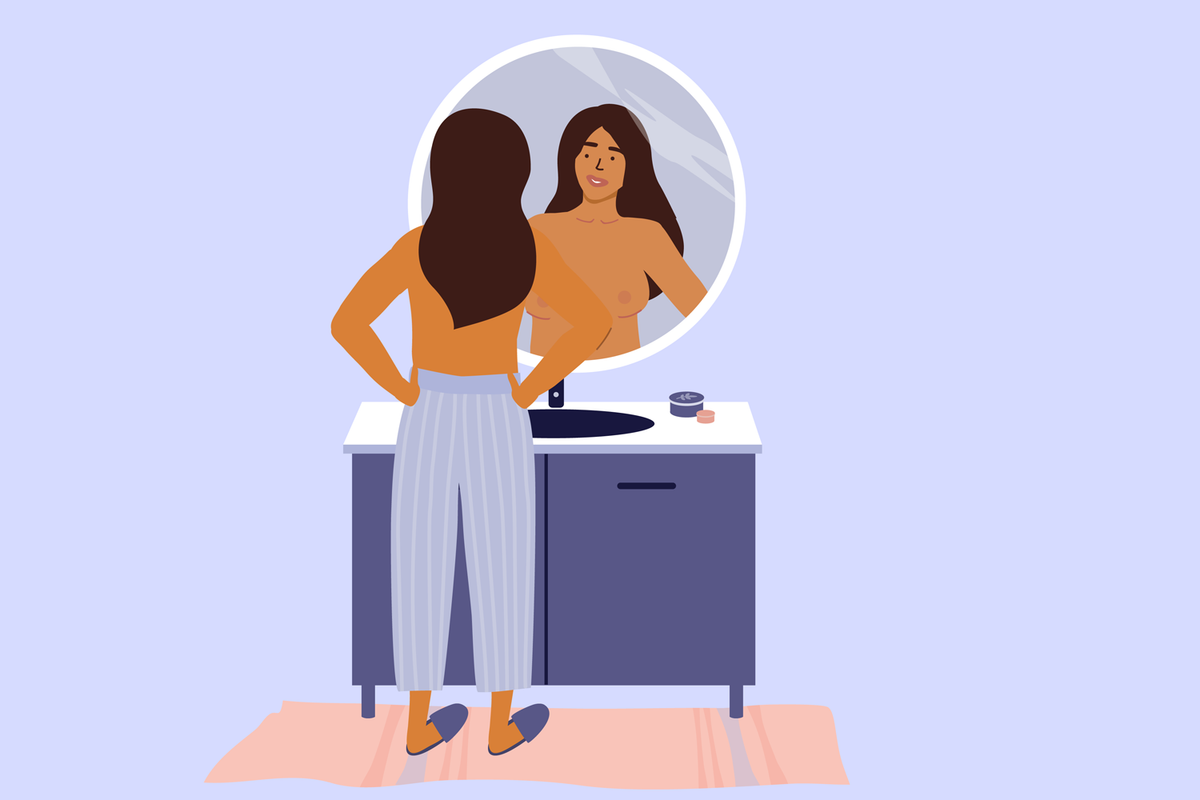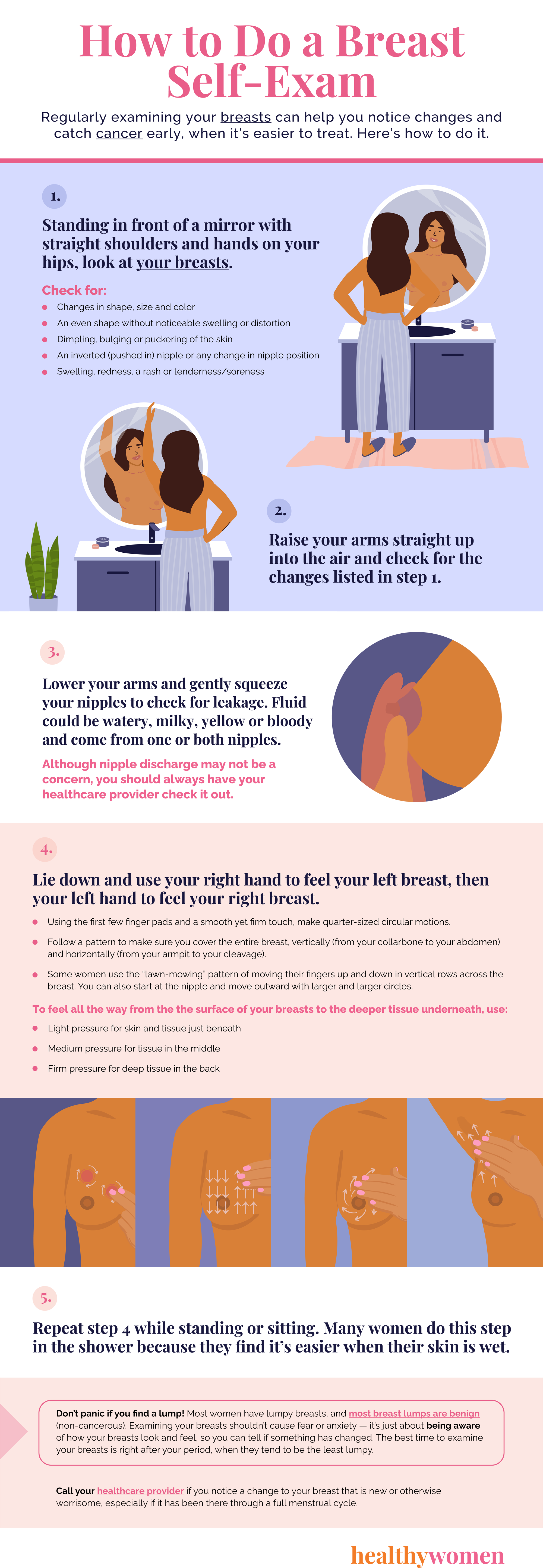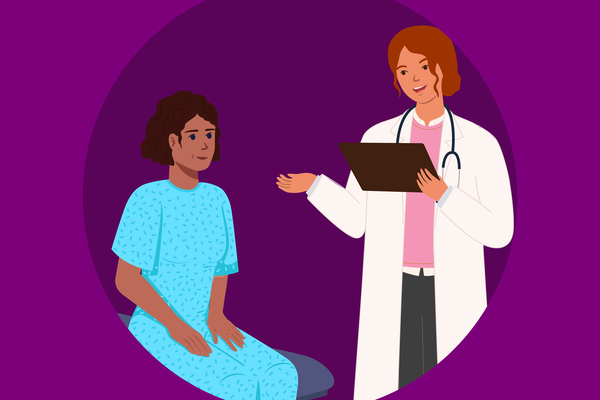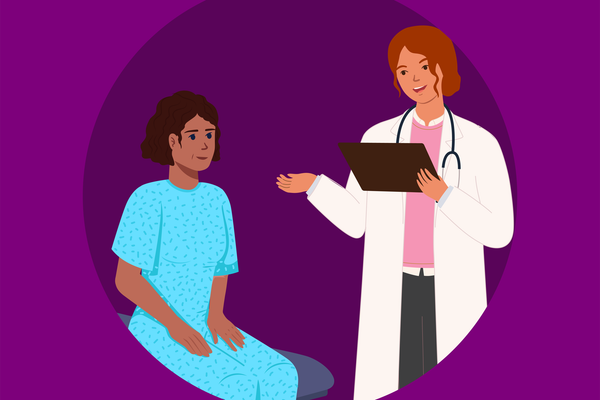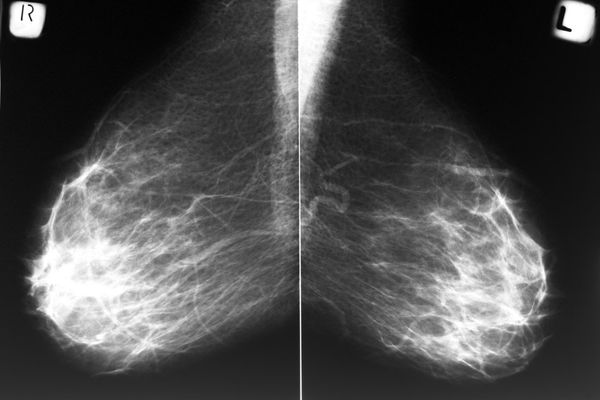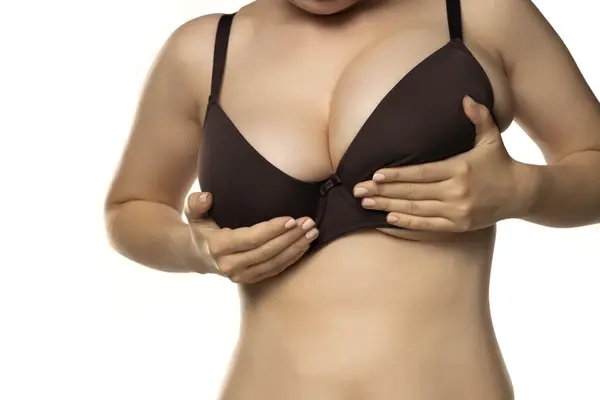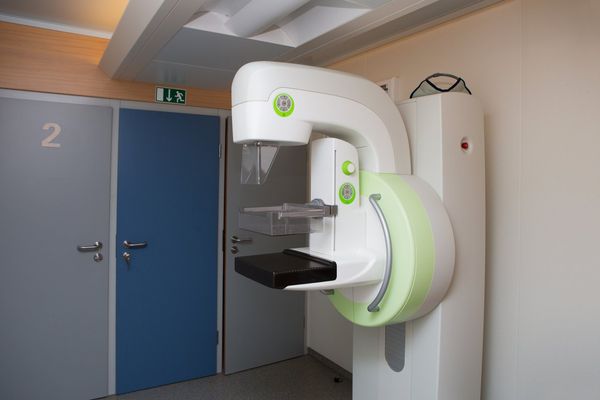October is Breast Cancer Awareness Month.
Regularly examining your breasts can help you notice changes and catch cancer early, when it’s easier to treat. Here’s how to do it.
1. Standing in front of a mirror with straight shoulders and hands on your hips, look at your breasts. Check for:
- Changes in shape, size and color
- An even shape without noticeable swelling or distortion
- Dimpling, bulging or puckering of the skin
- An inverted (pushed in) nipple or any change in nipple position
- Swelling, redness, a rash or tenderness/soreness
2. Raise your arms straight up into the air and check for the changes listed in step 1.
3. Lower your arms and gently squeeze your nipples to check for leakage. Fluid could be watery, milky, yellow or bloody and come from one or both nipples.
Although nipple discharge may not be a concern, you should always have your healthcare provider check it out.
4. Lie down and use your right hand to feel your left breast, then your left hand to feel your right breast.
- Using the first few finger pads and a smooth yet firm touch, make quarter-sized circular motions.
- Follow a pattern to make sure you cover the entire breast, vertically (from your collarbone to your abdomen) and horizontally (from your armpit to your cleavage).
- Some women use the “lawn-mowing” pattern of moving their fingers up and down in vertical rows across the breast. You can also start at the nipple and move outward with larger and larger circles.
To feel all the way from the the surface of your breasts to the deeper tissue underneath, use:
- Light pressure for skin and tissue just beneath
- Medium pressure for tissue in the middle
- Firm pressure for deep tissue in the back
5. Repeat step 4 while standing or sitting. Many women do this step in the shower because they find it’s easier when their skin is wet.
Don’t panic if you find a lump! Most women have lumpy breasts, and most breast lumps are benign (non-cancerous). Examining your breasts shouldn’t cause fear or anxiety — it’s just about being aware of how your breasts look and feel, so you can tell if something has changed. The best time to examine your breasts is right after your period, when they tend to be the least lumpy.
Call your healthcare provider if you notice a change to your breast that is new or otherwise worrisome, especially if it has been there through a full menstrual cycle.
- Normal Breast Changes Over a Lifetime - HealthyWomen ›
- Healthy Breasts: A Guide to Caring for Your Breasts - HealthyWomen ›
- Overcoming the Fear of Breast Cancer - HealthyWomen ›
- Questions to Ask at Your Breast Exam - HealthyWomen ›
- Facts About Self Breast Exams - HealthyWomen ›

